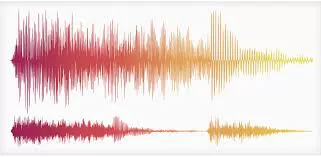Shanghai, China — A groundbreaking study published in Cell Reports unveils how Western classical music can enhance mood by synchronizing brain activity in regions associated with emotional processing. Conducted by a team at Shanghai Jiao Tong University, this research could pave the way for innovative music-based therapies for those with treatment-resistant depression.
The study, led by Bomin Sun, director of the Center for Functional Neurosurgery at Shanghai Jiao Tong University, utilized advanced brainwave measurements and neural imaging techniques to explore the effects of classical music on the brain. The findings highlight how music synchronizes neural oscillations between the auditory cortex and the reward circuit, a process crucial for emotional regulation.
“We are integrating neuroscience, psychiatry, and neurosurgery to explore how music impacts emotion,” says Sun. “Our goal is to translate these insights into clinical practice, creating effective music therapy tools.”
The research focused on 13 patients with treatment-resistant depression who had electrodes implanted in their brains for deep-brain stimulation. These implants connect the bed nucleus of the stria terminalis (BNST) and the nucleus accumbens (NAc), two areas in the forebrain involved in emotional processing. The study revealed that music elicits antidepressant effects by synchronizing neural oscillations within this circuit, often referred to as part of the ‘extended amygdala.’
Sun explains, “Music induces triple-time locking of neural oscillations in the cortical-BNST-NAc circuit through auditory synchronization.” This finding underscores the strong connection between the BNST-NAc circuit and the amygdala, a key structure in processing emotions.
Participants were divided into two groups based on their music appreciation levels: low and high. Those in the high appreciation group exhibited more significant neural synchronization and greater antidepressant effects. In contrast, the low appreciation group had less pronounced results. By understanding these differences, researchers aim to develop personalized music therapy plans to enhance treatment outcomes.
The study also incorporated various Western classical pieces, chosen to minimize interference from participants’ prior familiarity with the music. This approach ensured that the observed effects were due to the music itself rather than personal preferences.
Future research will delve into how music interacts with deep brain structures involved in depression and explore the potential benefits of combining sensory stimuli, such as visual images, for multi-sensory therapeutic effects.
Sun envisions a future where music therapy is seamlessly integrated into daily life through digital health products. “We plan to develop smartphone applications and wearable devices that offer personalized music recommendations, real-time emotional monitoring, and virtual-reality experiences,” he says. “These tools will provide effective self-help options for managing emotions and improving symptoms.”
For more details on this study, refer to the article “Auditory Entrainment Coordinates Cortical-BNST-NAc Triple Time Locking to Alleviate Depressive Disorder” in Cell Reports (2024). Read more here.












